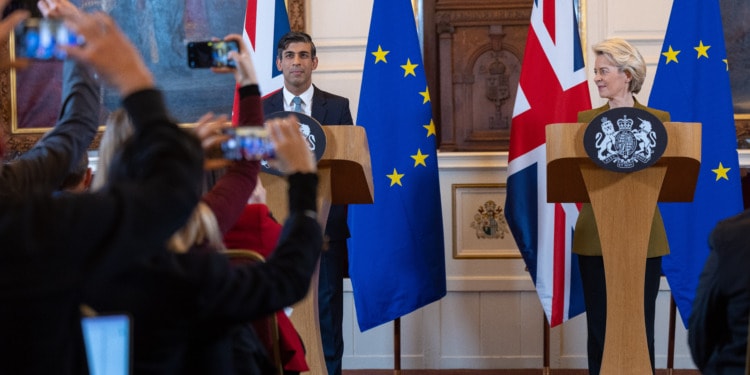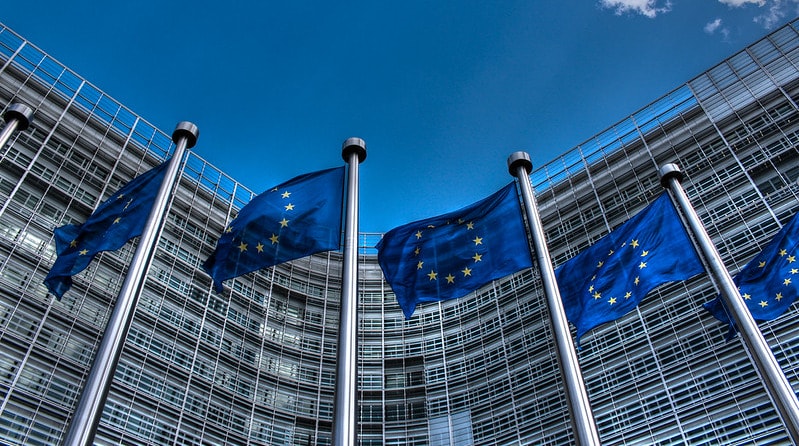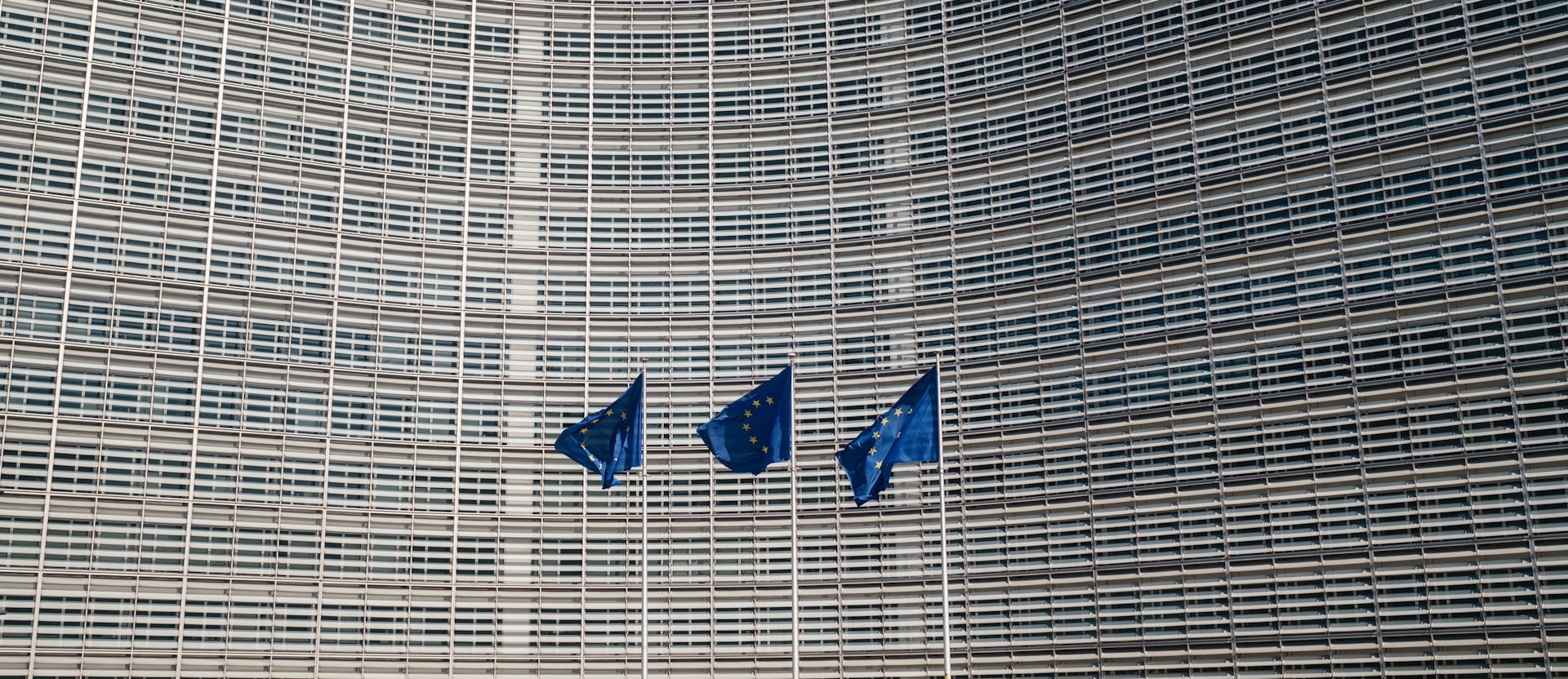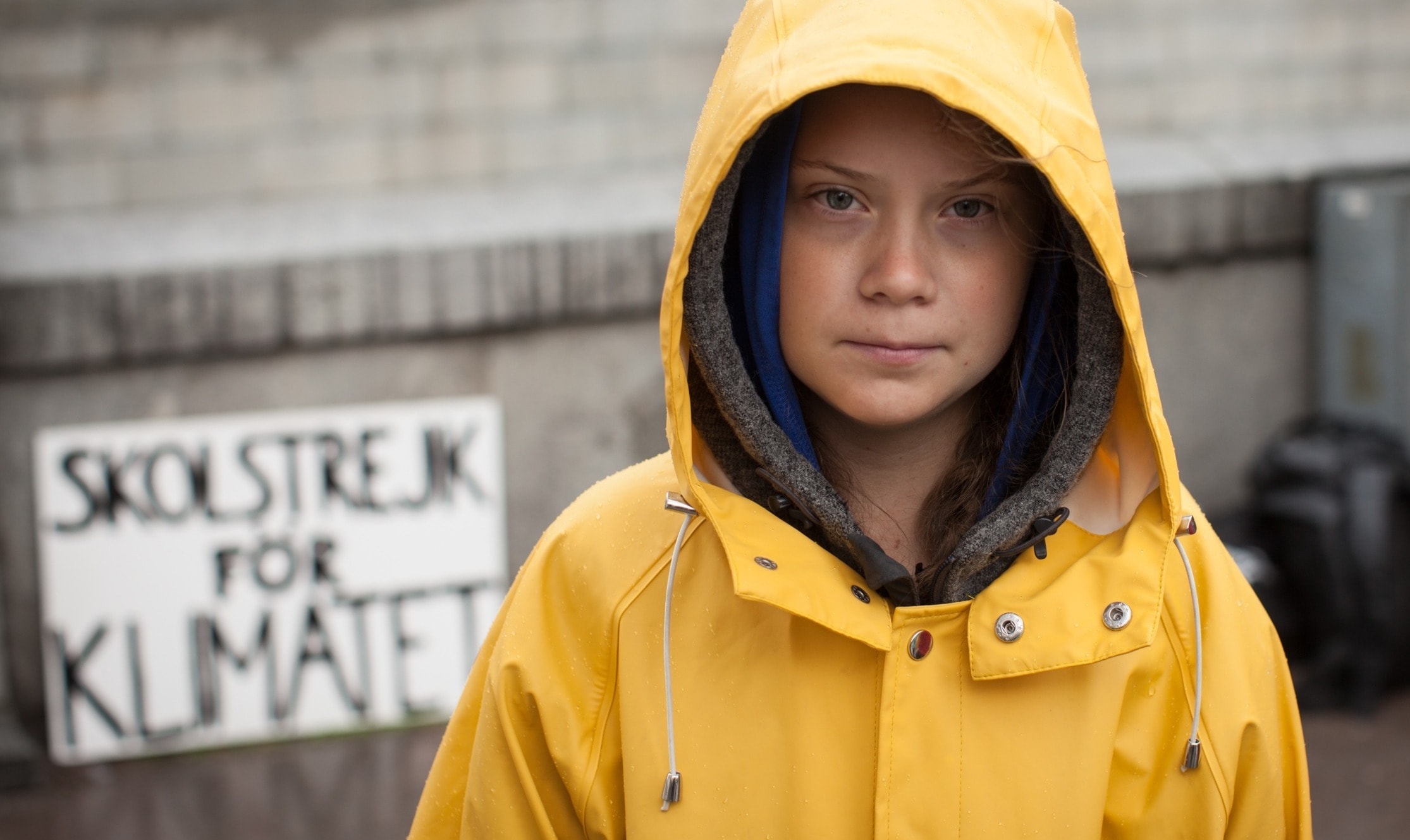The UK and the EU have struck a new deal intended to solve the long-running dispute over post-Brexit trade rules for Northern Ireland.
Known as the Windsor framework, the deal comes some six years after the Brexit referendum and is intended to solve issues with the contentious Northern Ireland Protocol from the original Brexit deal agreed upon in 2019.
While both UK Prime Minister Rishi Sunak and European Commission President Ursula von der Leyen describe the deal as a “new chapter” in EU-UK relations, what does the deal actually mean?
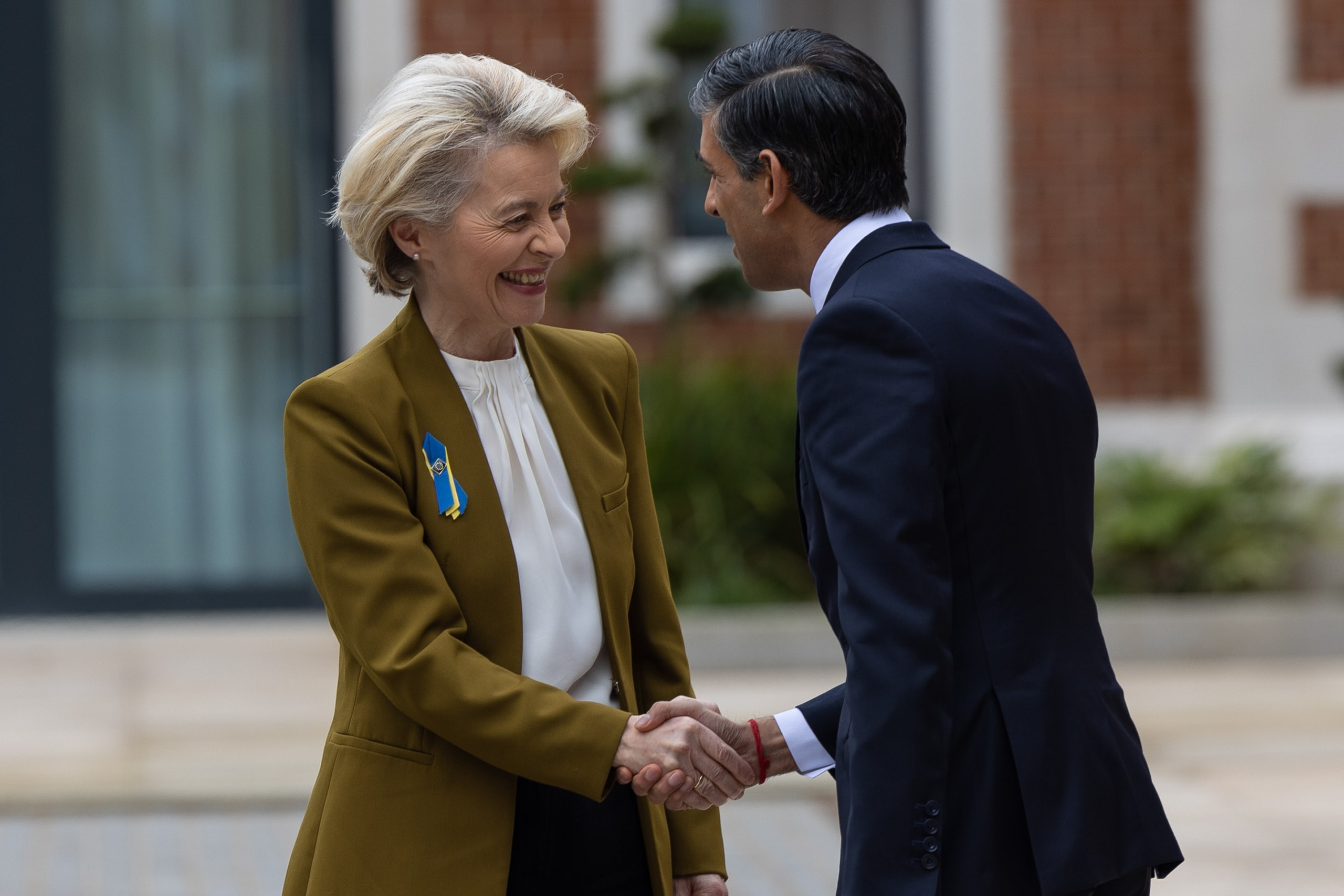
What are the contents of the deal?
The new deal aims to allow goods to flow more freely from the rest of the UK into Northern Ireland. Previously all goods arriving in Northern Ireland would be subject to checks and paperwork.
The new framework splits goods into two lanes. A green lane for goods remaining in Northern Ireland which would see most checks and paperwork scrapped, and a red lane for goods that are continuing on to the Republic of Ireland which is in the EU. These goods would still require checks as they are being imported into the EU.
After months of negotiations, the UK and EU have finally clinched a deal on Northern Ireland trade. Here's how the 'Windsor Framework' will change things from subsidies to taxes: https://t.co/iUDCGbS3e8 pic.twitter.com/WxFZNstzKV
— Financial Times (@FinancialTimes) February 28, 2023
All requirements for trade from Northern Ireland to the rest of the UK have also been removed.
Beyond trade, Northern Ireland would no longer have to follow some EU rules such as on the VAT tax. Stormont, the Northern Ireland Assembly, previously had no say in the EU rules that had to be followed.
A new Stormont break has been introduced which would allow the assembly to object to new EU rules. To trigger the break, 30 politicians from two or more parties would have to sign a petition.
Why does Northern Ireland need a special agreement?
Northern Ireland is part of the UK along with England, Scotland and Wales. However it borders the Republic of Ireland, making it the only part of the UK that shares a land border with the EU.
When both the Republic of Ireland and the UK were in the EU, goods and people moved freely between the two countries. However, the exit of the UK from the EU meant border controls and new trade rules were needed.
Related Articles: Is Brexit to Blame for Britain’s Winter of Discontent? | Northern Ireland Protocol: Truss Tempts Trade War | Life of a European Family After Brexit
Due to the complex history between Northern Ireland and the Republic of Ireland at the time all parties ruled out a hard border between the two.
Instead the Northern Ireland Protocol was created. It meant there was no border between Northern Ireland and the Republic of Ireland and instead a sea border between Northern Ireland and the rest of the UK.
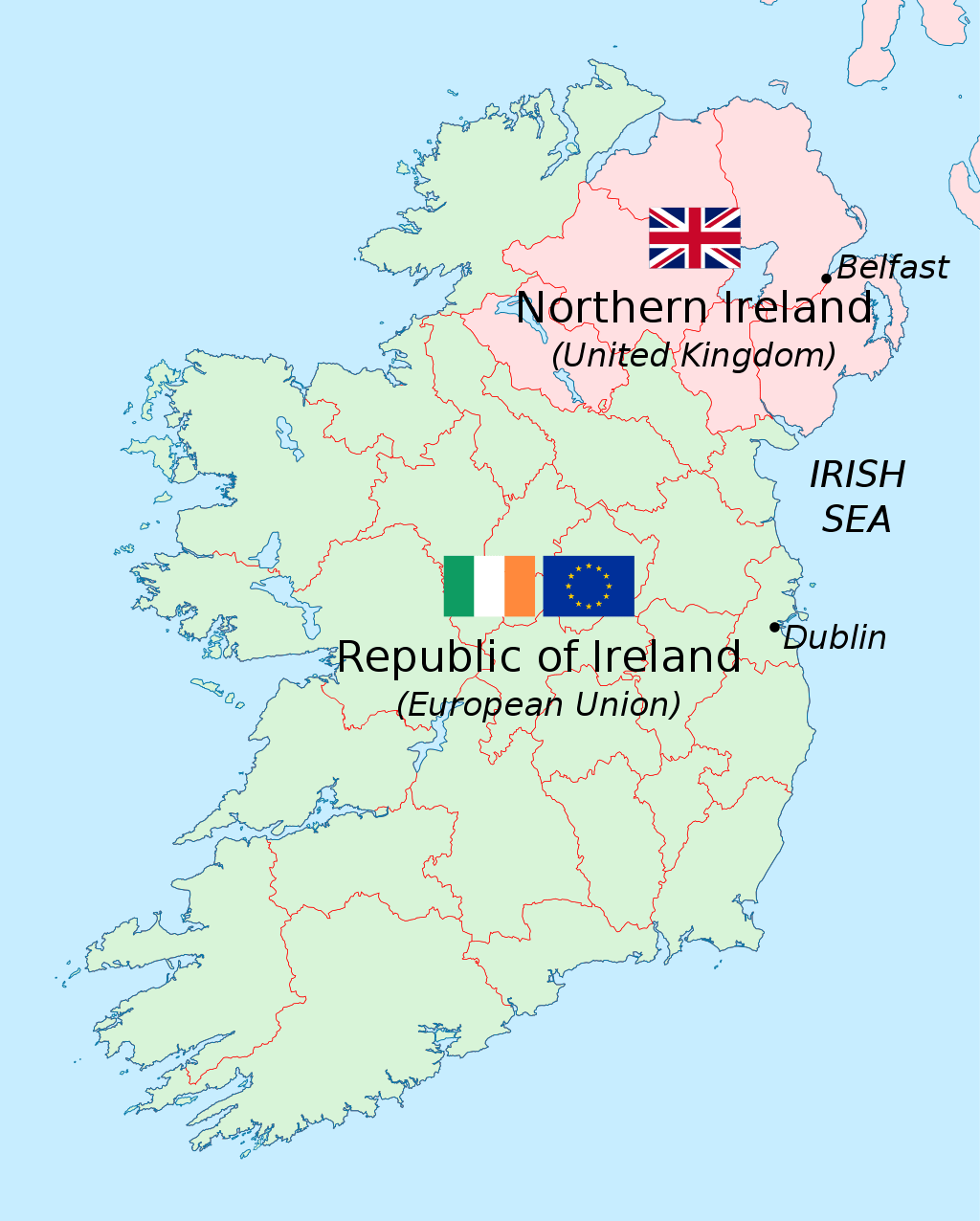
When Ireland gained independence from the UK in 1922, six counties – Northern Ireland – remained part of the UK. Violence in Northern Ireland between republican forces who wanted a united Ireland and loyalist forces who wanted to stay in the UK lasted for 30 years and claimed the lives of 3,500 people.
Known as the Troubles, the conflict finally ended with the Good Friday agreement in 1998.
What happens next?
The deal will need to be passed by the UK parliament in Westminster. This is unlikely to be an issue, as the main opposition party Labour have said they will agree to it. Moreover, there is unlikely to be significant opposition from the ruling Conservative party MPs.
However, it is unclear if it will be accepted in Northern Ireland.
The Democratic Unionist Party have said they will study the deal before giving support or not. They were so strongly opposed to the original Northern Ireland Protocol that they refused to sit in the Northern Ireland assembly, leaving no functioning parliament.
Editor’s Note: The opinions expressed here by the authors are their own, not those of Impakter.com — In the Featured Photo: UK Prime Minister Rishi Sunak and President of the European Commission Ursula von der Leyen at a press conference following discussion on the new UK-EU deal, Windsor, UK. Featured Photo Credit: Simon Walker / No 10 Downing Street.


